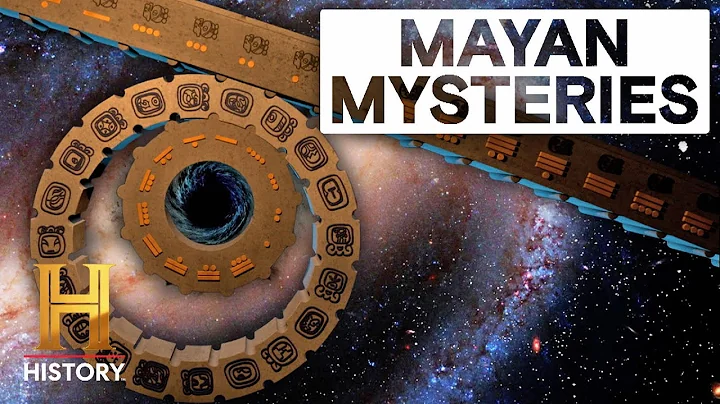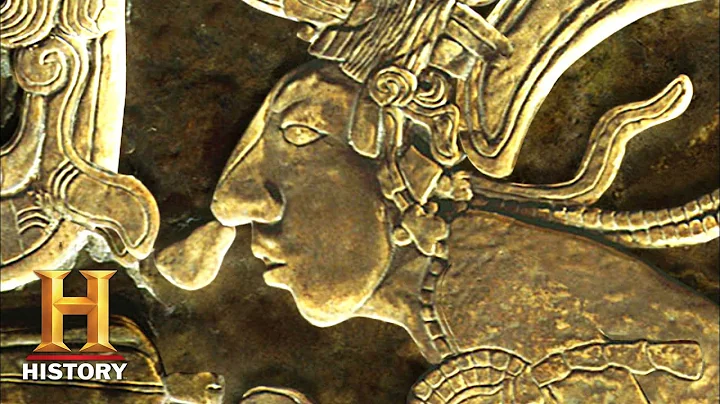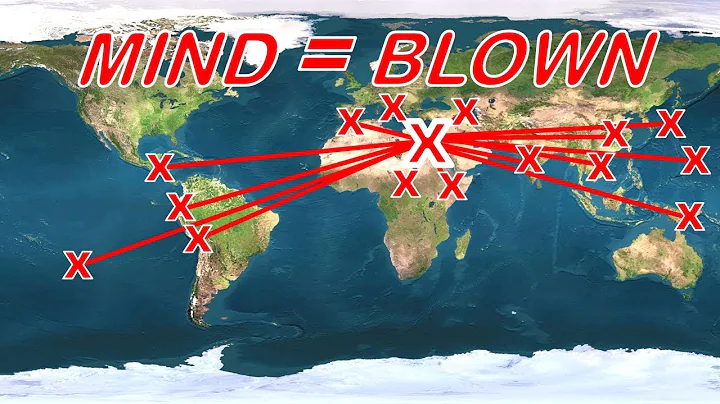As early as 2013, American artist Heather Dewey-Hagborg extracted the DNA samples attached to cigarette butts picked up on the streets of Brooklyn, and used  D printing technology to restore these people who littered cigarette butts
D printing technology to restore these people who littered cigarette butts
:1 and carried out A wave of “public executions.”
Stranger Visions,Heather Dewey-Hagborg
Perhaps for some students, the last time they came into contact with a laboratory was when they observed bacteria through a microscope in a chemistry class in junior high school. But in fact, biological art has long been used by "crazy" artists to explore the limits and truth of human beings.
In the past, they were limited by technology and strictly limited the scope of bioart to "life forms". However, with the emergence and leap-forward development of biology, digital, integrated media, virtual reality and artificial intelligence in the new century Development, the well-known human-machine combination , cyberpunk , gene editing , and even new media, VR, AR, XR, etc., can all be bioart.
The development and changes of bioart
Bioart (BioArt) is an art practice that takes biological tissues, cells, living bodies and their life states as objects. Artists use biotechnology, such as genetic engineering, biological tissue culture technology, etc., in laboratories and Create bioart pieces in a studio or art space to express thoughts and concepts.
In 1933, the British scientist Alexander Fleming (Alexander Fleming) showed the audience the charm of "bacterial painting" for the first time.
This kind of behavior of cultivating microorganisms in different natural pigments and sprinkling them on the corresponding positions on the paper according to the needs of different colors makes more like a scientist than an artist.
San Diego, Nathan Shaner
Since then, many artists have fallen in love with this kind of "biological painting" . In 2006, the work of artist Nathan Shaner (Nathan Shaner) was created in Roger Tsien's laboratory, using fluorescent protein The bacteria painted the San Diego beach scene, "Exploring microorganisms Expressionist painting , the artistic language of biological colors and textures naturally reveals uniqueness in the painting."
At first, artists' exploration of biological art was more limited to the biology itself. For example, the artist Damien Hirst's "Freeze" (1988) and "Modern Medicine" were included in the textbooks of Central Saint Martins and regarded as classics. Modern Medicine" (1990) series. It set off a "New British Art" movement, and he was also known as the most expensive contemporary artist in the UK.
Frozen zebra,Damien Hirst
But since the 1950s, our biotechnology has undergone a series of evolutions, such as DNA, cloning, immortality, the concept of post-humanity, etc., all of which have brought new ways of thinking to art. .
In 1980, the pioneer artist of bioart, Straker, his works have been dedicated to showing the direct effect and transformation of modern technology on people. An arm manipulator was created in "Third Hand". In one performance, he used his three hands to write the word "Evolution". This work touches on information control and conditioned reflexes of body functions, expressing the concept of integration of man and machine.
Third Hand, Stelarc
"Father of Bioart" Eduardo Katz, converted a passage in the " Bible " into Morse code, then converted the Morse code into a DNA sequence, and implanted it into bacteria. Exhibited in the art gallery.
Audiences can adjust the ultraviolet light above the bacteria to change the living state of the bacteria through on-site or remote network. Following a series of linkage effects of bacterial mutation, the Morse code and the text of the Bible will change. The artist will carve these changed characters on another stone slab.
Genesis, Eduardo Kac
After Katz's idea at the cellular level was successful, he came up with the idea of realizing this change in the living body, so he created "Green Fluorescent Protein Rabbit" .
He extracted a unique jellyfish intermediate green fluorescent protein GFP. used this method to cultivate transgenic fluorescent rabbits in 2000, which would emit green light .
Alba, Eduardo Kac
These are all pioneering art designs made by "crazy" artists exploring biological science in the last century. Today, especially after the world Covid-19 pandemic, the development of biology has gained more and more attention. attention, our exploration of biological art should not just stop at the proposition of bacteria and organisms themselves .
Technologies such as cyberpunk, human-computer interaction, and virtual reality can all be applied to bioart.
The rise of emerging bio-art
Bio-art is an international art movement, and it is also a technological art that occurs and develops in the context of contemporary art. It has become a new type of art together with plug-in digital virtual art, artificial bionic art, and physical conversion art. Type of experimental art or futuristic art. Since the life elements of bioart are composed of carbohydrate , it is also called unplugged wet media art.
The work "breathing" created by Brazilian artist Guto Nobrega in 2008 combines plants with artificial mechanical systems , "using Arduino controller, special GSR circuit, RCBLED lamp, optical fiber , organic glass bowl , inserting umbrellas backwards and many other new forms of art."
Guto Nobrega, breathing Reference URL: http://www.artdesign.org.cn/article/view/id/69373
Similar works are also reflected in the students’ portfolios.
Hanyi student Z, who applied for both Huangyi Product Design and Lunyi Biological Design, , made a device that uses projection sensors to link cigarette butts and plants together, allowing people to visually feel when you throw them away. One cigarette butt later, what damage it can do to plants.
Student Z, a student of the 21st batch of Hanyi, won the Royal Art Product Design, Lunyi Biodesign, Edinburgh, Kingston, Brunel, and Raff MAoffers, and won the CSC National Award
Another American new media artist Micha Cardenas in a 365 Hours of mixed reality show Second Life's work explores "the cross-border influences of biotechnology, wearable computing, and the real and virtual worlds ."
It can be seen that with the empowerment of emerging technologies in the new century, the forms of bioart have long been ever-changing. So what kind of innovation can we make in bioart at this stage?
As shown below, we made a summary for the students:
For example, cross-species design, Bio-Inspired ( bionics ) , combined with biology and fantasy new species, such as Cyberpunk 2077 The bionic man , the brain-computer interaction interface studied by Musk's Neuralink company, etc., these can actually become biological designs.
Many students also use bionics in product design, architectural design, fashion design, visual communicationand other professional portfolios.
Hanyi student MATTEO won the Milestone Integrated Product Design MAoffer
Hanyi student S won the AA space performance and design MAoffer
For example, two Hanyi students whose inspiration came from marine life, MATTEO student used the biological characteristics of squid bionic design has developed a novel juicer . S classmate used the properties of octopus to design a variable building surface to solve the ventilation and privacy issues in the bathroom.
Recommended colleges to apply to
Although compared to sculpture, painting, and bioart, it is still a brand new art field and a subject that is still developing. However, many art colleges and universities have already opened related courses or conducted related research. , such as Central Saint Martins’ MA art and science, MA Biodesign, Goldsmiths’ MA art & Ecology, etc.
Picture source: UAL Central Saint Martins
If students have the enthusiasm to study bioart in depth, they can choose these specialized majors for further study.
Like Saint Martin's Arts and Sciences major is mainly divided into three parts: interdisciplinary practical theoretical research, independent project development interdisciplinary practice and independent project realization interdisciplinary practice, actually encourages students to conduct independent research and practice .
But in the process, students can collaborate on a large number of interdisciplinary projects with different institutions, including British Library , Gordon Museum of Pathology, Tate Museum and so on.
Hanyi student X won the MA in Visual Communication from CSM Arts and Sciences, Southampton, NTU, New South Wales, and Monash offer
However, the scope of bioart is vast after all, and it does not necessarily mean that students majoring in biodesign can study it. Students majoring in new media art and design, pure art, interaction and products, architecture, etc. can cross-border and try .
Huangyi IDE, UCL-Bartlett's Bio-integrated Design, although they may seem like majors specializing in science and art, in fact biotechnology has always been their favorite.
Another example is MIT Media Lab, which can be called a high-tech manufacturer. Its Media Art and Science covers more than 20 projects such as touchable media, personal robots, and smart cities, all of which require the most cutting-edge technology. Technology and the most creative design.
Media Art and Science optional groups
and Medical Visualization and Human Anatomy at Geyi, NYU ITP program, UCLA DMA, SVA Bio-Art, Rhode Island Design D+M of the college , HKU new major IDT, HKUST's intelligent construction major , etc...
If students are interested in art related to living organisms and the creation of new cross-border species related to biology , then you can really learn more about the wonders of biological art.
Of course, you can also come to participate in this "Ancestral Echoes Summer Camp". Scan the QR code in the picture to sign up. Let's go into the "Hanyi Laboratory" together and try different project creations.
For more questions about art study abroad, portfolio, postgraduate study, , and application for the World Expo, please send a private message to Kang Shishi in the background.











